Commerce DefinitionThe exchange of products and services between two or more entities is referred to as commerce. Often, it entails purchasing and selling valuable items. The three parties involved in commerce might be either customers, businesses, or both. Value is exchanged in commerce, and one of the parties frequently makes money from the transaction. It also encompasses the services offered by businesses and other organizations that support the exchange of goods and services. 
There are five key reasons why commerce is crucial to our society:
Be aware that commerce is a subset of what we term business and is not the same as business. Without mentioning the production or manufacturing processes, commerce also entails the distribution of the items created by producers. Features of Commerce
1. Economic ActivityCommerce is an economic activity because commerce involves actions made to generate revenue. A trader purchases products with the intention of selling them for a profit. 2. Distribution and Exchange of Products and ServicesDistribution and Trade of Goods and Services are integral parts of commerce. It is possible to buy or manufacture goods to sell. Trade and trade-related assistance are both included in commerce. 3. Earning ProfitsMaking money is the driving force behind all commercial endeavors. Everything that is not done with the intention of making money is not considered to be part of commerce. 4. Production of UtilitiesA variety of utilities are produced through commerce. By transporting commodities to the location where they are required, it produces place utility. It creates time utility by making items accessible as and when needed. By establishing these utilities, trade contributes to raising trade volume. Commerce's Branches
1. TradeA seamless flow of commodities from producer to consumer is made possible through trade, which removes human obstacles. Buying and selling products are the basis of trade. A manufacturer will continually search for customers who are willing to pay a fair price for their goods. In particular, for individuals who live in remote locations, the producers might need help to make contact with potential clients. A connection between a producer and dispersed clients must thus be made through intermediaries. By using wholesalers and retailers as middlemen and implementing a chain that begins with producers and ends with crucial customers, trade removes the barrier of individuals. 2. TransportTransport removes site obstacles. Generally, in the current configuration, the production and consumption sites are quite close to each other. The distance between the center of production and the center of consumption creates a gap between the producer and the consumer. Therefore, transportation provides spatial utility. Different means of transport are roads, railways, sea routes, and airlines. Transport shortened distances and brought people, therefore producers and consumers, closer. Thus, transportation removes the location barrier. 3. StorageTime is no longer a barrier due to warehousing. There is always a lag between production and consumption. The products are therefore created in anticipation of demand. Certain products, like sugar, wheat, etc., are produced during a specific season and are used all year round. While certain other products, like woolen clothing, coolers, fans, etc., are produced all year round but only utilized during certain seasons. As a result, there is a temporal lag between production and consumption. The commodities are kept in a warehouse to avoid the effects of time and are made available to customers when they need them. Hence, warehousing produces time utility. 4. InsuranceInsurance removes the hindrance of threat. As the items are in transit, they are exposed to a variety of threats, including fire and theft. Similarly to this, there is a danger of loss when the items are kept in warehouses due to theft, fire, or other natural disasters, etc. As a result, the impediment of danger is a byproduct of the hindrance of time and location. Many different types of insurance plans are available to cover the risk of loss. The possibility of fire-related loss is covered by fire insurance. Marine insurance protects against the danger of loss from maritime risks. As a result, insurance reduces the risk-related obstacle. 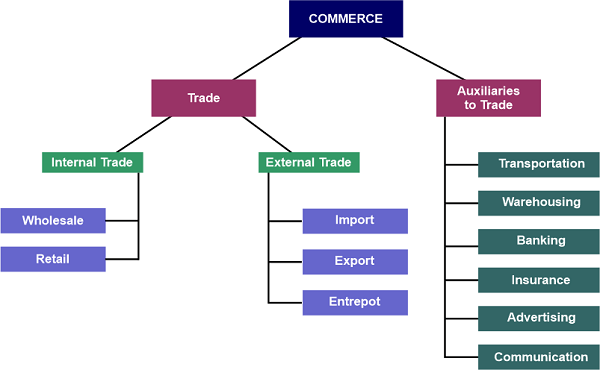
5. BankingBanks reduce the financial barrier and make trading easier. Goods are exchanged depending on the price, location, and timing. When there is a delay between production and consumption, the intermediaries who handle distribution must make financial arrangements. Overdrafts and loans from the bank remove the financial barrier. Moreover, banking is crucial as a way of transferring money from one person to another. Banks play a critical role in international trade when it comes to sending and receiving payments. 6. Selling and AdvertisementThe barrier to knowledge is eliminated through advertising and persuasive sales tactics. The exchange of goods is limited by a need for more information about the products and their uses. The public has to be informed about the availability and benefits of goods, which necessitates advertising efforts. Customers are drawn to the showroom by product knowledge, and the last push of salesmanship helps to mature the sale or exchange. As a result, by reducing the knowledge barrier, advertising and salesmanship aid in increasing exchange. Commerce Business ModelsOne's company model determines the target market for your products or services. A variety of business strategies are viable for both brick-and-mortar and online businesses, as well as for both. Selecting one can help your e-commerce company establish a place in the industry and effectively contact clients. 1. Business to Consumer (B2C)The most prevalent business model, known as "business-to-consumer," or B2C, is what most people envision when thinking of commerce. Instead of selling goods or services to other companies or manufacturers, a B2C company deals directly with consumers. Retailers often operate as B2C companies. 
In comparison to other business models, a B2C company may be simpler to launch because of its enormous potential consumer base. Yet, managing a sizable clientele might also involve handling a sizable volume of returns and grievances. Apart from that, with so many different merchants available, persuading customers to make more purchases could be challenging. 2. Business to Business (B2B)Business-to-business, or B2B, is a sales paradigm where one company sells to another company. You may, for instance, market components or raw materials used by manufacturers to create B2C goods (this is called a B2B2C model). Instead, you may provide a service like bookkeeping targeted towards businesses rather than people. 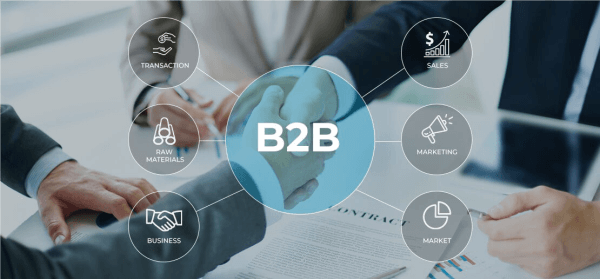
One benefit of a B2B business model is that you frequently get repeat business or, in the case of service organizations, ongoing money from a client. Nevertheless, you can have a smaller consumer base because you're selling a more specialized product. Your company's clients could also wish to haggle about costs and methods of payment. 3. Peer to Peer (P2P) or Consumer to Consumer (C2C)E-commerce platforms frequently assist in facilitating peer-to-peer sales. They might be online marketplaces like Poshmark, Facebook, or eBay, where vendors offer goods they already possess or have purchased from specialist shops. As with rideshare drivers, P2P firms can also engage in the sale of services. 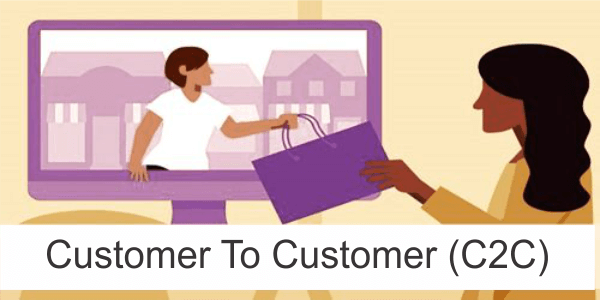
In general, peer-to-peer e-commerce business models involve a website or platform that aids in the consumer discovery process while also taking a cut of the purchases. These might be less reliable compared to more established business models like B2B or B2C sales. 4. Business to Government (B2G)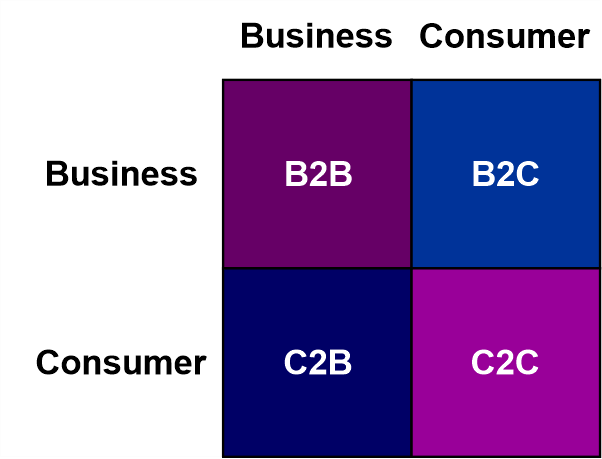
Businesses that conduct business with the government online are uncommon. This approach is appropriate for companies that offer their services directly to the government. To compete for government contracts, your company often has to be well-established. Yet, you can be qualified for the SBA 8a program, which might provide an advantage if persons of color or individuals who fulfill other demographic standards hold most of your business. 5. Direct to Consumer (D2C)An established middleman is removed in a direct-to-consumer business strategy. For example, manufacturers have historically sold mattresses to departments, furniture, and mattress stores, who resell them to customers using them as beds. Yet, during the past ten years, direct-to-consumer (D2C) mattress firms have been selling these items to specific clients through online channels. 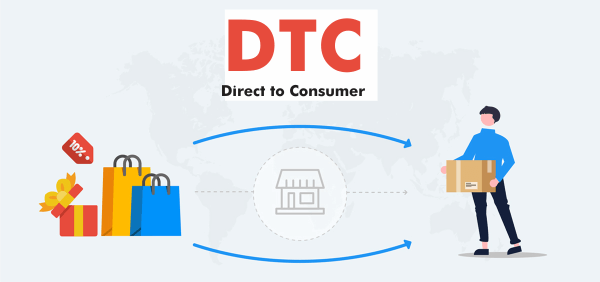
Small-business marketing is essential to a direct-to-consumer company model since it will be up to your clients to learn about your goods in a novel way. You'll need to collaborate with a fulfillment center to keep inventory and send out orders to customers on schedule. 6. Consumer to Business (C2B)
Businesses rely on specific customers in a C2B business model to create value in addition to using their products. A corporation that uses social video but doesn't create its content may serve as an illustration. Instead, when digital artists freely submit movies to the site, the business inserts adverts on them, making money and maybe giving some to the creators in the process. Advantages of Commerce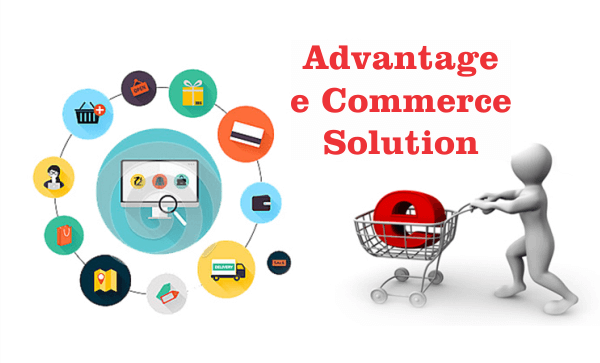
As follows, we list some more benefits of commerce: In order to:
Each one of them is explained briefly below : 1. Satisfy Human DemandEvery day people have more demands. Basic wants and secondary expectations are the categories scholars classify human demands into. Food, health, education, and a calm atmosphere are included in basic requirements, whereas pleasures of life like technology, cars, and simple communication are included in secondary needs. The timely distribution of all necessary resources and raw materials for the production of goods and products is made possible by commerce. It also significantly impacts trade, making products and technologies accessible to everyone around the globe. By this, the business helps to satisfy people's insatiable wants and advance societal welfare. 2. Commerce Increase the Living StandardsThe lifestyle of society's citizens is related to the level of living. If the vast majority of people can afford to purchase increasingly expensive and sophisticated goods, then their level of living is high. Commerce plays a key part in raising the level of living by making every product accessible to everyone on the planet. Consumers should have the means to purchase pricey, cutting-edge items before using them. Basically, commerce aids in managing the proper object at the proper location, raising human living standards in the process. 3. Create a Link Between Producer and the ConsumerFor the purpose of consumption, products are made. The ultimate objective of businesses and manufacturers in product consumption. Via wholesalers and retailers, commerce establishes a relationship between a supplier and a customer to ensure the timely delivery of the goods to the intended audience. Through marketing and sales representatives, commerce aids in giving consumers accurate product information and specifications. The likes and dislikes of customers are widely known to manufacturers thanks to marketing research. Finding those parameters in a product that will satisfy consumer demand is made easier by doing this. This kind of trade establishes direct communication between the product's maker and the consumer. 4. Increase Employment OpportunitiesThe need for workers in businesses that are associated with the commerce industry and trade, such as banking, transportation, warehouses, and marketing, is growing. The company needs more employees to handle the expansion of its financial, marketing, and manufacturing processes. Giving millions of individuals in the nation access to jobs raises the nation's employment rate. 5. Growth of the EconomyAny nation's GDP and output are closely related. The majority (80%) of the nation's net revenue comes from production and manufacturing. A product's production and consumption both rise as a result of commerce. Importing and exporting items from other nations are also aided by it. Each nation may import the raw materials they require through efficient trade if they need to produce a good. Hence, it is safe to state that trade plays a significant part in the expansion of the economy. 6. Contribute to The Expansion Of Trade And AidsWith the growth in the trade and commerce sector. Expansion and modernization are required, and they are beneficial to commerce. The banking, transportation, financial, and marketing industries all have a connection to trade aids. These trade facilitation tools may be updated and developed to suit the current world's needs with the assistance of efficient and well-organized commerce. 7. Commerce Contributes to the Expansion of Industrial DevelopmentThe smooth process of manufacturing and industrial growth is made possible by commerce. Maintaining records and managing data are quite challenging without effective commerce. By promptly delivering the necessary goods, commerce assists in meeting customer needs. On the other side, it gives the manufacturer items and raw materials to handle the manufacturing process smoothly. So, trade contributes to the expansion of the nation's industrial production and development. 9. Encourage International TradeTrade enables nations to trade excess goods and products with other nations. Countries may purchase and sell goods worldwide and make foreign currency if transportation and communication are simple. International standards and some legislation protect nations from loss and fraud in international trade. 10. Helps the Developing CountriesUnderdeveloped and developing nations can import skilled labor and technological knowledge from developed nations, while developed nations can acquire raw materials from underdeveloped nations. These trades contribute to the stability of the developing nations' economies. 11. Commerce Helps in EmergenciesWhen there are crises like wars, earthquakes, floods, and natural calamities, trade enables the delivery of aid to such places by locating necessities like food, medicine, and other comforts. 12. Low Financial CostHaving a cheaper initial cost is one of the advantages of e-commerce. Rent for one of the locations used by physical retail establishments can cost up to thousands of dollars. Also, they incur a number of up-front expenses, including those for shop signage, store design, product purchases, sales equipment, and more. Not to mention that each site needs people to operate, which is another shop owner's responsibility. Depending on the worth of the goods in the shop, they could also need to engage security personnel. 13. Constant Potential IncomeOnline retailers are constantly available for business, which is another benefit of e-commerce. You can draw attention to yourself with Facebook advertising at any time of day, whether it's 4 a.m. or 11 p.m. Contrarily, most physical businesses are open from 9 a.m. to 9 p.m., offering you an advantage over rivals. Being accessible all the time can help you get clients who would typically shop at your establishment if it were open. 14. Sell GloballyA new brand may sell to people throughout the world, which is the next advantage of e-commerce. Whether they are in South America, the United Kingdom, or nearby nations, you may find your audience. Several items come with low ePacket delivery or free shipping if you decide to dropship from AliExpress. As a result, you may offer your goods at market-competitive prices and deliver them to customers all over the world. Selling internationally is an amazing achievement since it speeds up the brand-building process, significantly expands your market, and enables you to realize profits well in advance of your local competition. Apart from that, you can steer clear of a lot of the hassles related to cross-border shipping with the help of our international shipping advice. 15. Simple to Showcase BestsellersShowing off items to your consumers is made simpler by e-commerce advantages like presenting the greatest sellers. A buyer may more easily locate the best-selling items in an online store than they can in a physical store, even though you can design a physical store to influence people to buy particular things. 16. A Customized Online ExperienceThe online purchasing experience may be improved by website customization. You may design individualized landing pages for various audiences, which is one of the main benefits of operating an internet business. This might persuade them to make a purchase from you without any further effort on your behalf. It's different than dealing with clients as soon as they enter a physical business, where you have to nurture them. When you start marketing to your consumer base, you may start by putting in all the hard work before launching a campaign. 17. Affordable WorkersThe ability to recruit staff at a reasonable cost and from any location in the globe is one advantage of e-commerce. You can outsource your work to hire virtual assistants in nations with substantially cheaper living expenses. With an internet business, you will only need as many personnel as you would with a physical store. You don't need to recruit staff when you first start an internet business, which is a significant advantage. A solo e-commerce venture is possible to launch and maintain. It would be best if you didn't begin to establish a team until you have enough money or reach a certain level of growth. Conclusion
Commerce and business are connected. Successful commerce improves job prospects and labor demand in industries like banking, marketing, warehousing, and transportation that are tied to it. For effective outcomes, commerce aids in the management of records and data. It raises the nation's level of industrial development and production. Furthermore, essential to import and export, commerce has a direct influence on the GDP of nations. So, if nations pay interest on their commercial debt, they will gain in a variety of ways.
Next TopicSocial Media-Definition
|
 For Videos Join Our Youtube Channel: Join Now
For Videos Join Our Youtube Channel: Join Now
Feedback
- Send your Feedback to [email protected]
Help Others, Please Share










